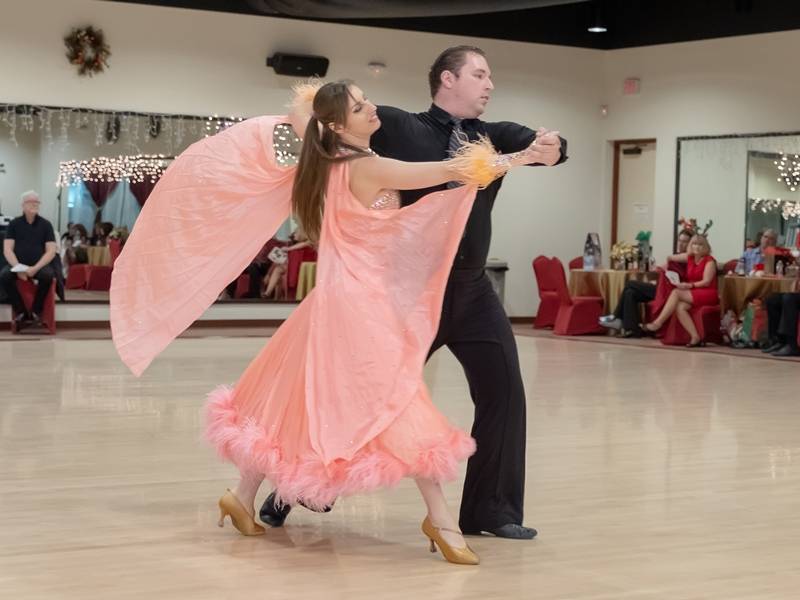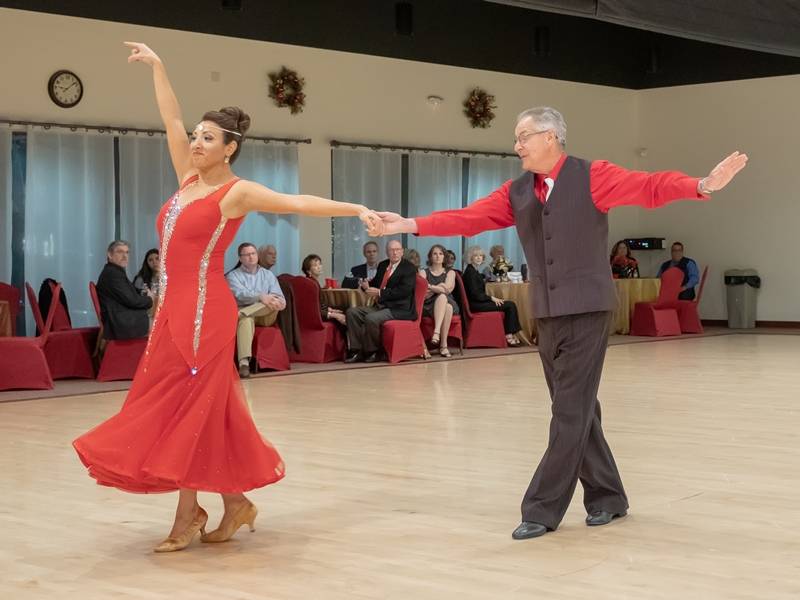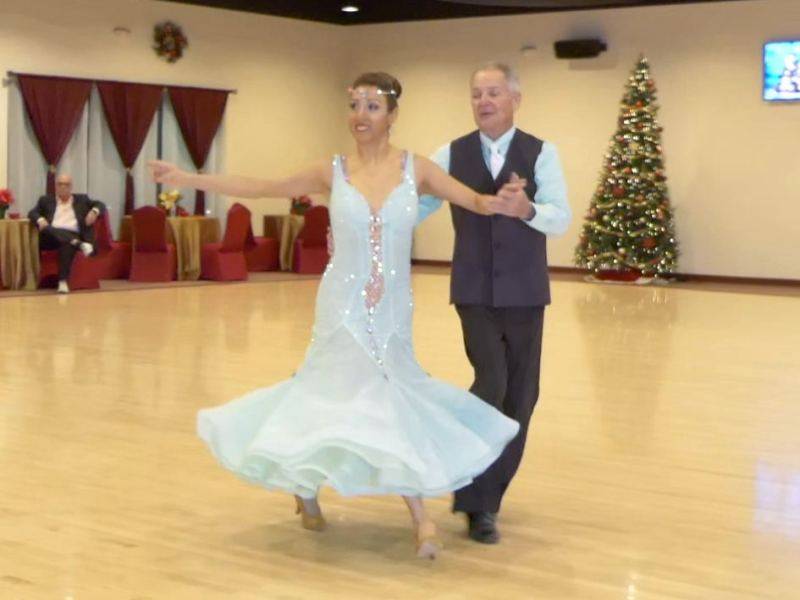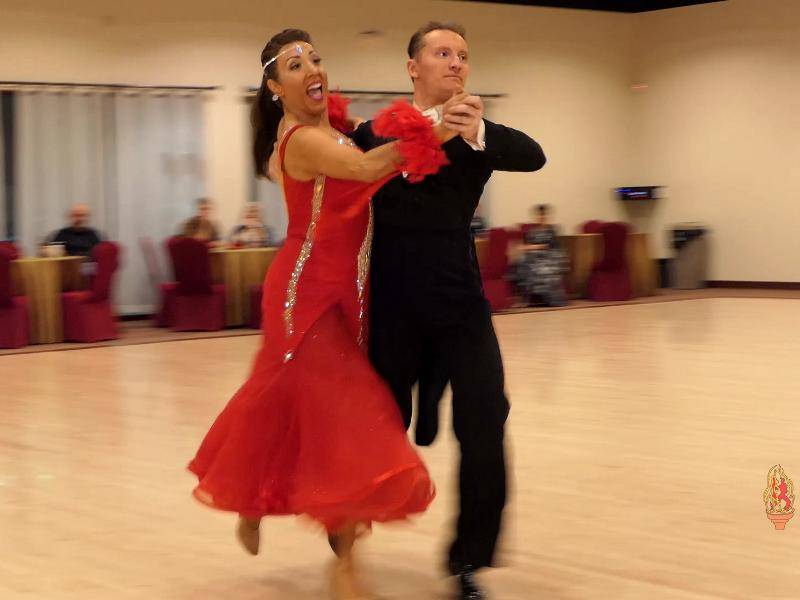Private Ballroom Dance Lesson (Waltz, Tango, Foxtrot, Viennese Waltz, Quickstep)
Learn to dance Ballroom in Houston! We teach many ballroom dances including Waltz, Tango, Foxtrot, Quickstep and Vienesse Waltz. Private Ballroom dance lessons are easy to fit your busy schedule and they are specifically tailored to your needs. After you complete your purchase call us or email to schedule your first lesson.
PRICE BREAKS - The more you buy, the more you save
Flexible Scheduling: We know that you are busy. Sometimes it is difficult to squeeze everything you want to do in 24 hours. Well, actually less, considering we need to sleep sometime. According to research, lack of time is the number ONE reason people give for not dancing. Our Private Ballroom Dance Lessons are designed to be flexible to schedule. You have time Tuesday morning at 11am? We can do it. Thursday afternoon? Not a problem. Friday evening? Sure. We are here to help aligning your schedule with our instructors.
Learn dances that you want: Many times people start dancing by going to group dance classes. This is a great start. However, you can't always choose the dance that you want in a group setting. In private Ballroom dance lessons this is not an issue. We will teach what you want to learn.
Private Environment: Not everyone feels comfortable learning to dance in a group class. There can be many reasons for that. In addition, it is more diffiuclt to focus on something new when there are other people around you. Even if they are nice, they may be distracting to your learning process. In a private Ballroom dance lesson you will get undivided attention of the instructor and will be able to focus better.
Personalized Curriculum: Group dance classes are good way to get familiar with the basics of Ballroom dance. However, even the best group class is geared primarily to addressing common concerns that apply to a majority of students. In a group class setting, dance instructors simply do not have enough time to address specific needs of individual students. And since everyone is unique, different people have different needs when it comes to dance. That is why it is very beneficial for students to take private Ballroom dance lessons with dance instructors to get more individualized attention. You may want to think of a private dance lesson as a combination of tutoring and a personal trainer. In private Ballroom dance lessons instructors have the ability to adjust teaching methods to better suit your individual needs and closely monitor your performance to address any concerns.
Who will be my teacher?
Denis Kojinov and Jeanette Chevalier are our ballroom dance teachers at DanceSport Club. They are very experienced instructors and dancers who work with variety of students ranging from beginners to advanced dancers. Click on the link to learn more about them.
What style Ballroom dances do you teach?
We teach American Smooth and International Standard. What is the differentce? In International style couple remains in closed hold throughout dancing. In American style partners do more open steps and may separate for a while. Both styles use same music. We recommend starting with American style since it is somewhat easier to pick up.
Do you teach social Ballroom dancers?
Yes we do. Anyone who wants to learn Ballroom dance is welcome!
Which Ballroom dances do you teach?

Waltz
The classic, elegant, Waltz is the quintessential, “ballroom dance” (think, Cinderella!) Known for its characteristic “123,” the Waltz is danced in a closed hold (partners do not break their frame and remain connected) from start to finish. This is a unique element to all International Ballroom dances.

Tango
The fiery and passionate Tango features staccato actions and powerful leg movements. Dancers do not have “body rise” within this dance, so it appears flatter and more linear across the dance floor. These features, along with a varied dance position and footwork, present interesting technical differences between the Tango and other International Ballroom dances.

Viennese Waltz
Originating in Vienna, Austria, the Viennese Waltz is significantly faster-paced than the Waltz (often referred to as the “Slow Waltz” for this reason). The Viennese Waltz is only comprised of seven figures, therefore dancers spend a lot of time focusing on the creation of the same full, voluminous movements that seem to race around the dance floor.

Foxtrot
The jazzy foxtrot takes on a smoother appearance within the International Ballroom style, ebbing and flowing like waves across the shore. Intricate rise and falls are created by decisive footwork that anecdotally awarded Foxtrot the title of the most difficult Ballroom dance.

Quickstep
Leaps, kicks, and running down the floor, all while being connected to another person? In the Quickstep, dancers seem to play Tetris while dancing and navigating in and out of "traffic" on the floor. It's a true talent.